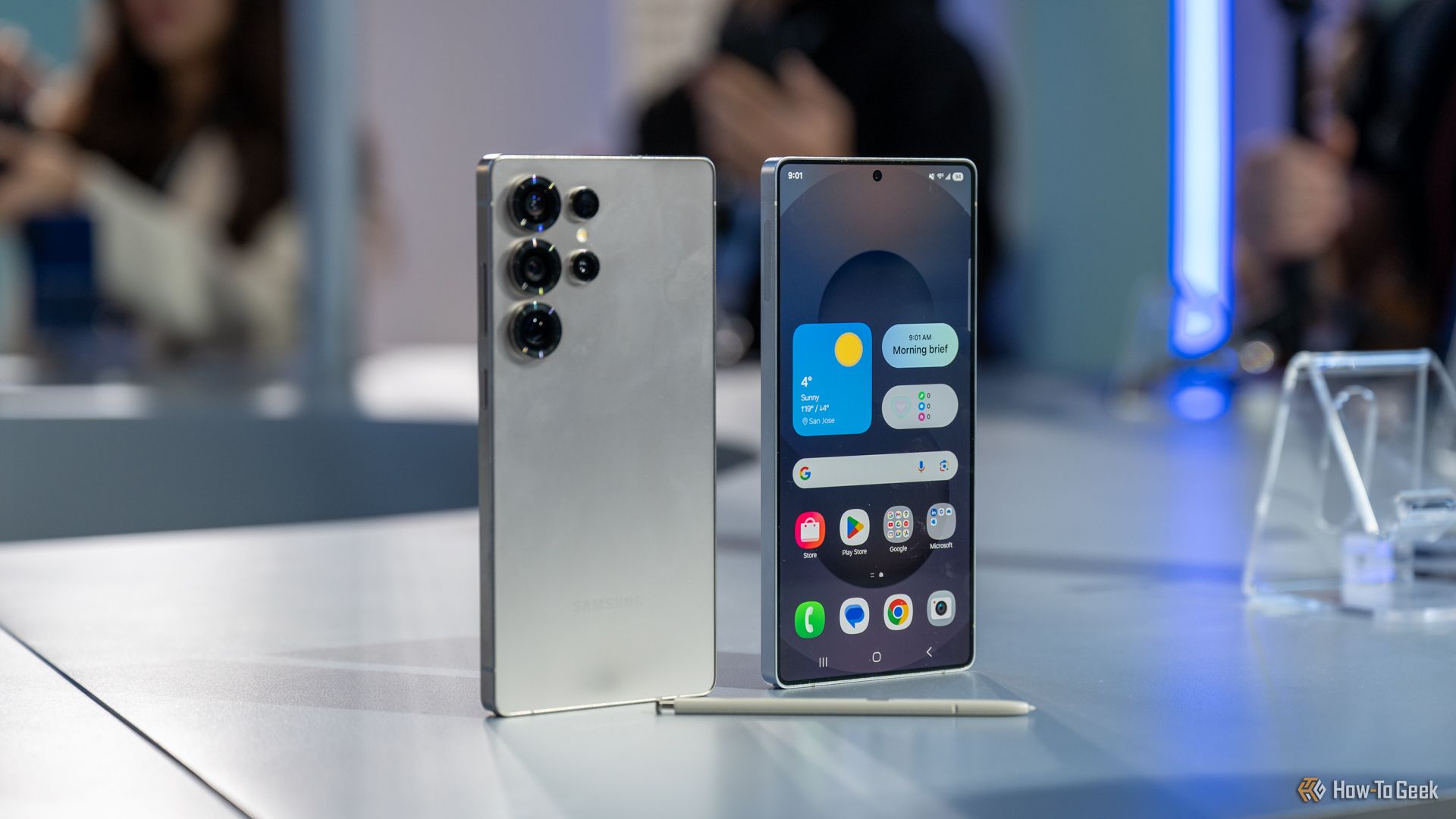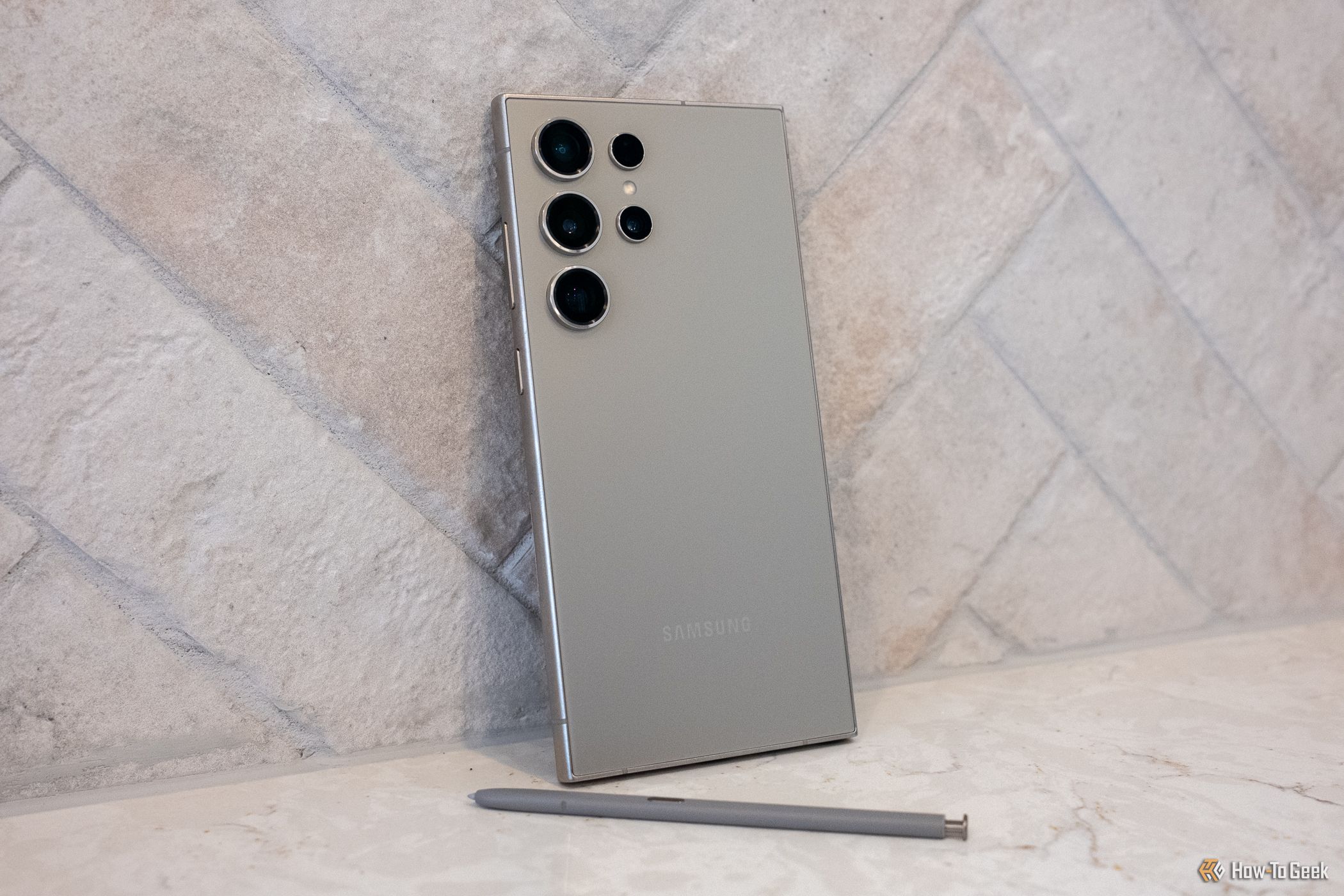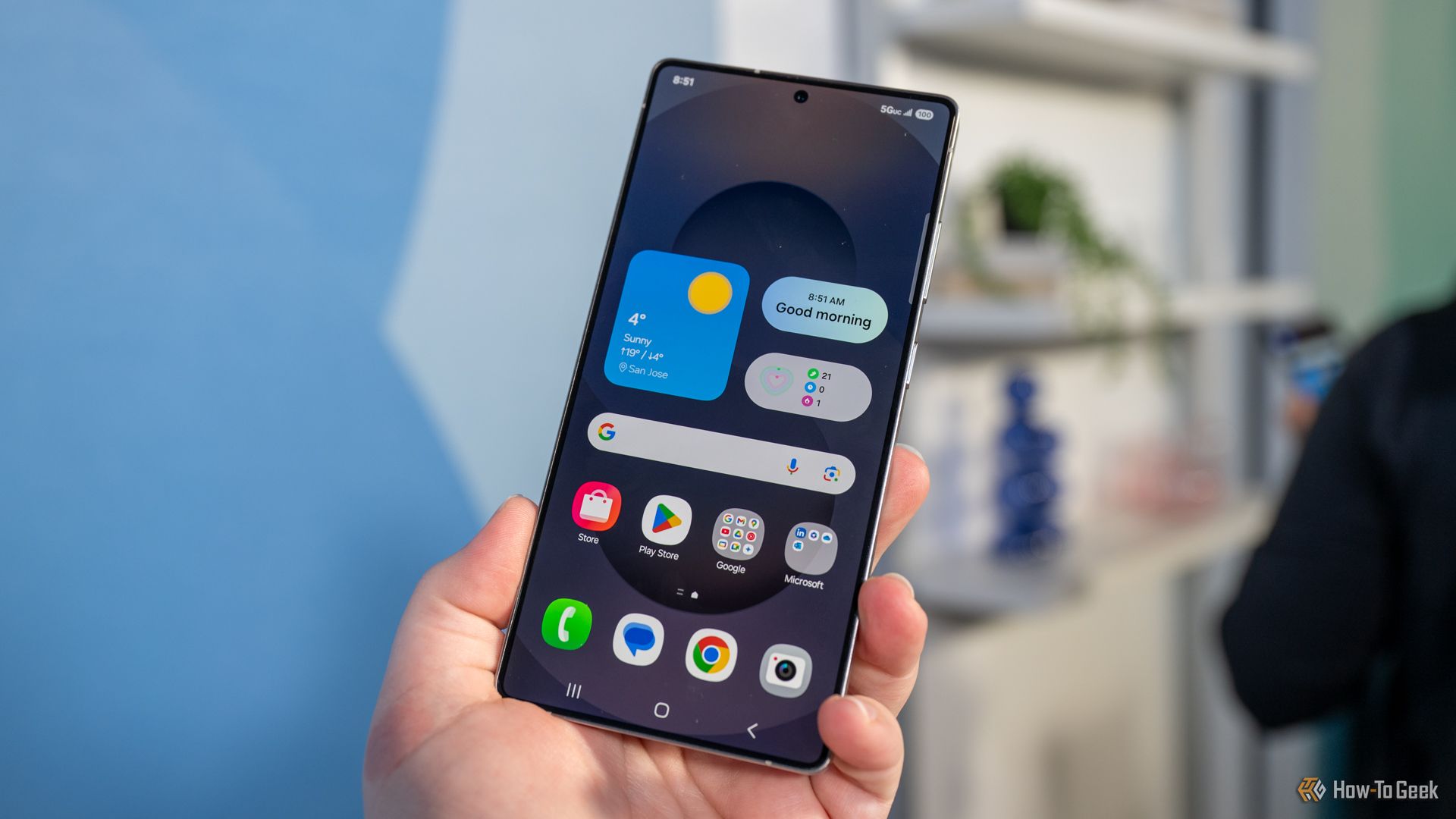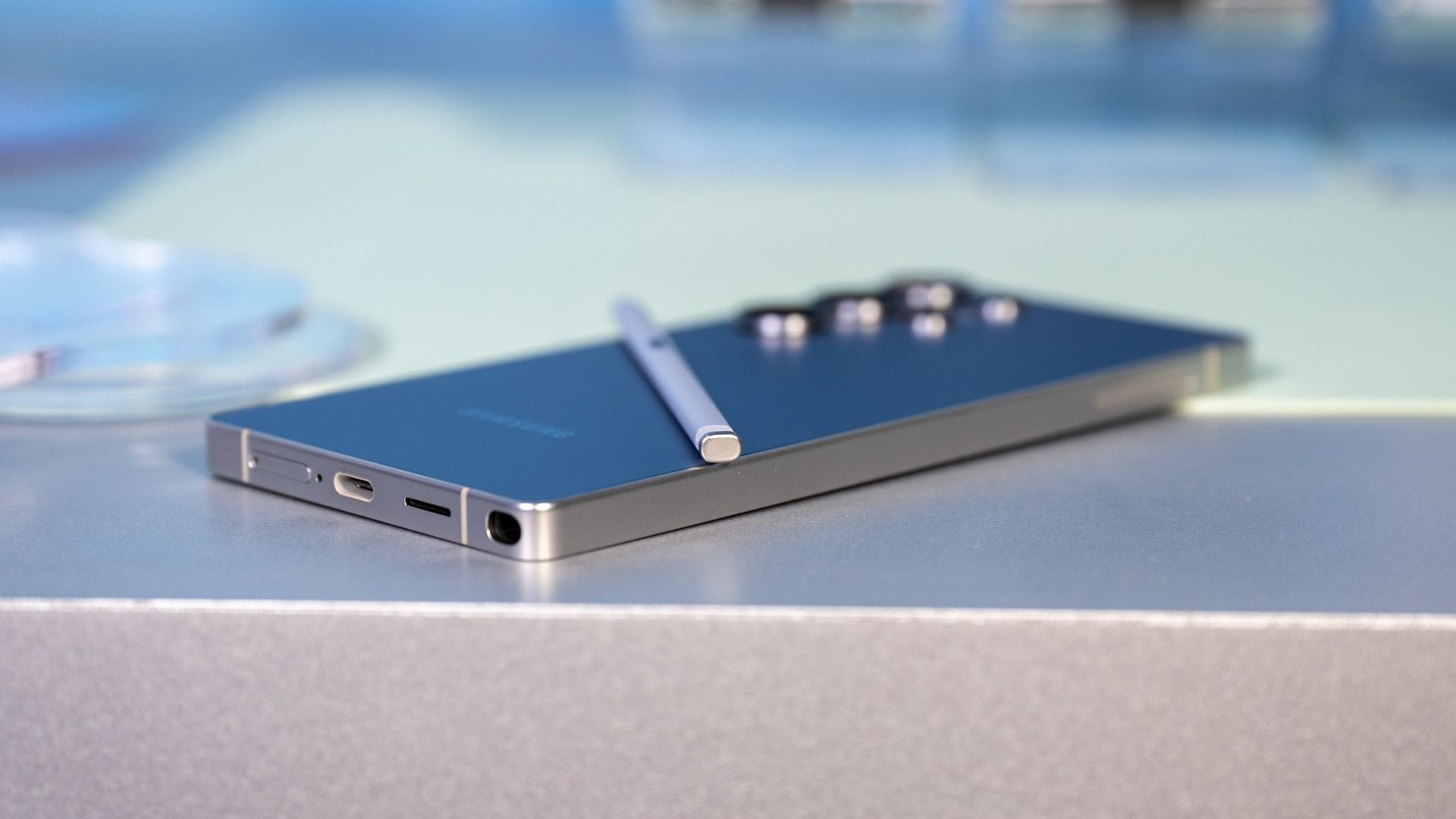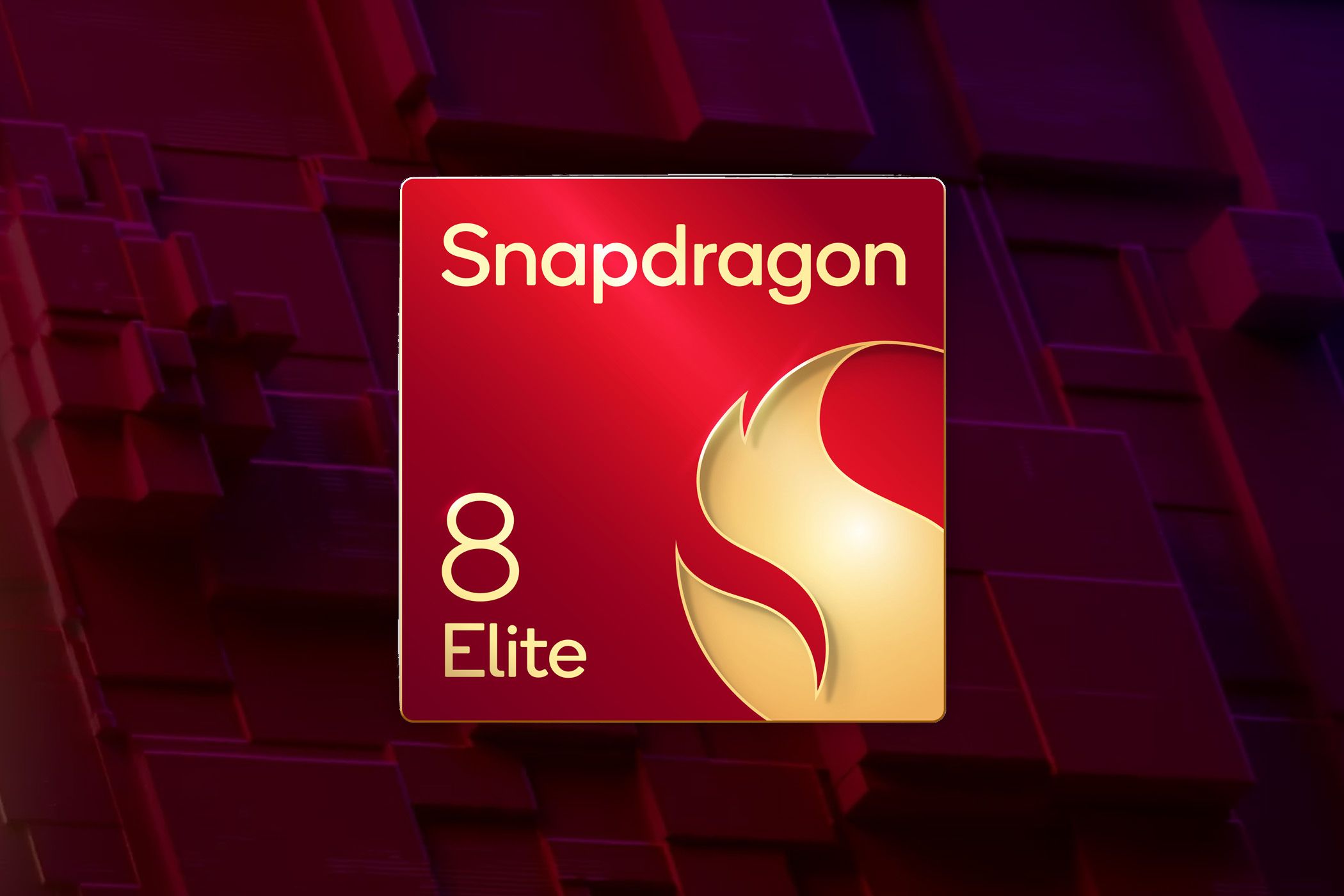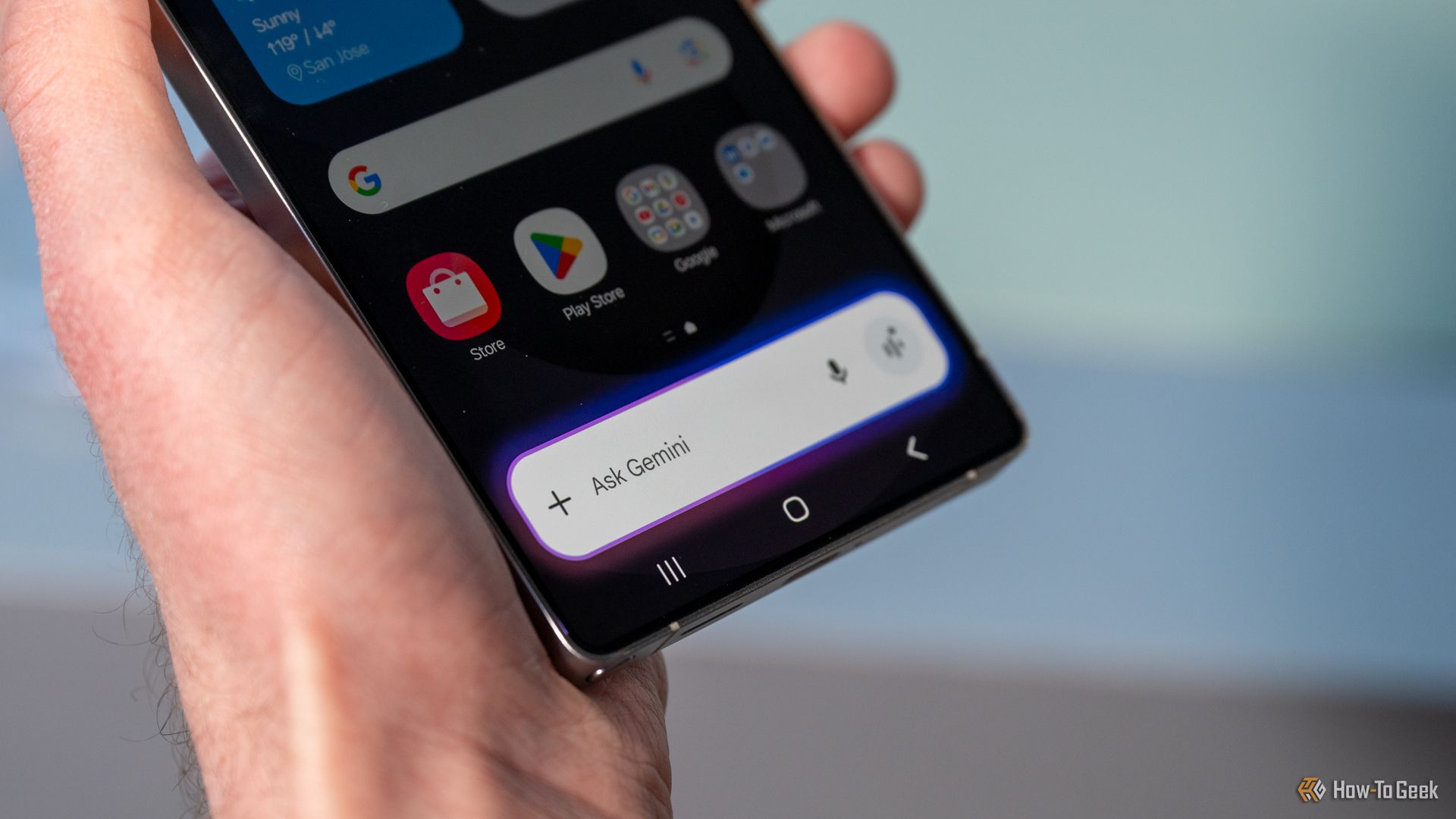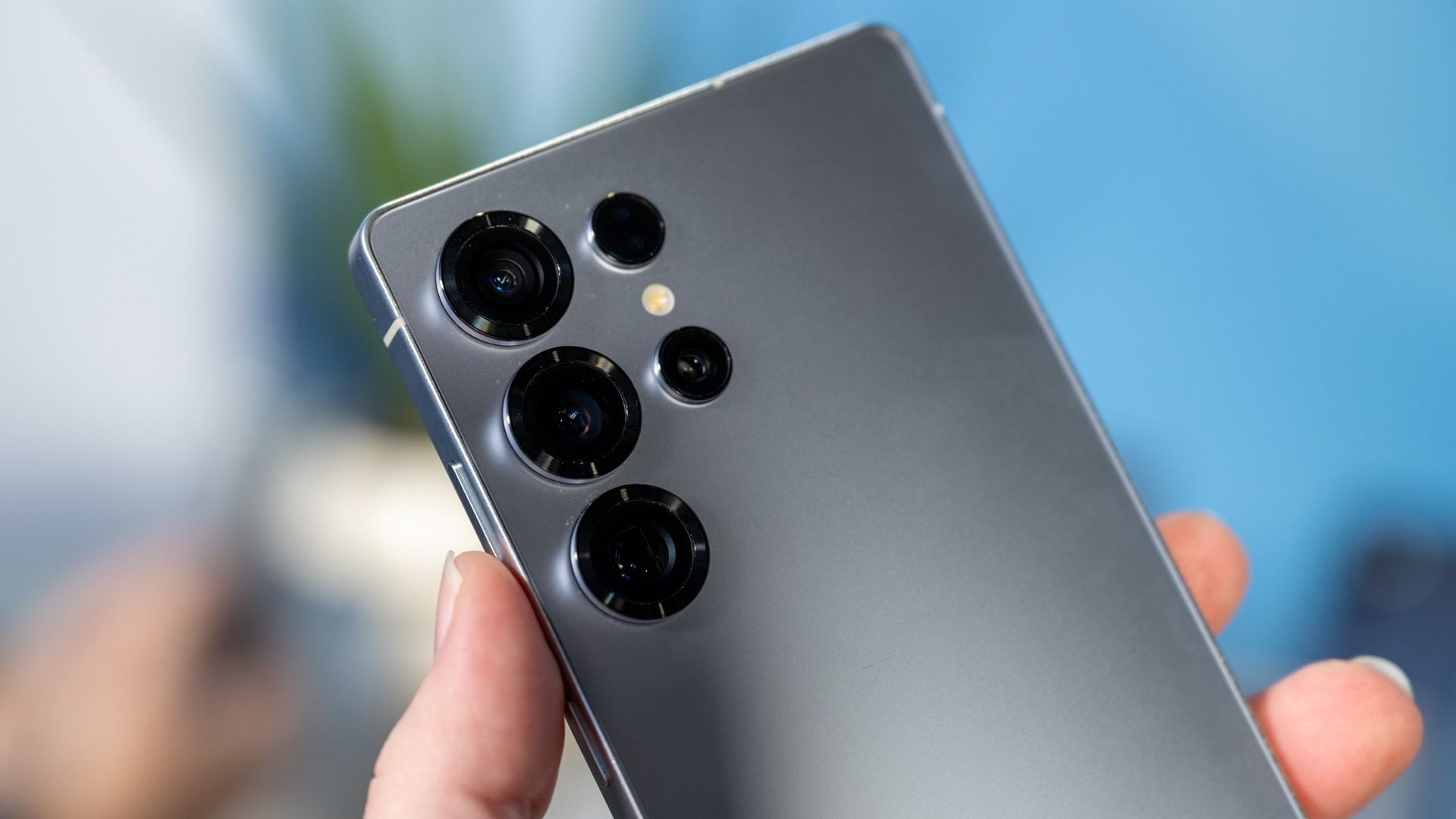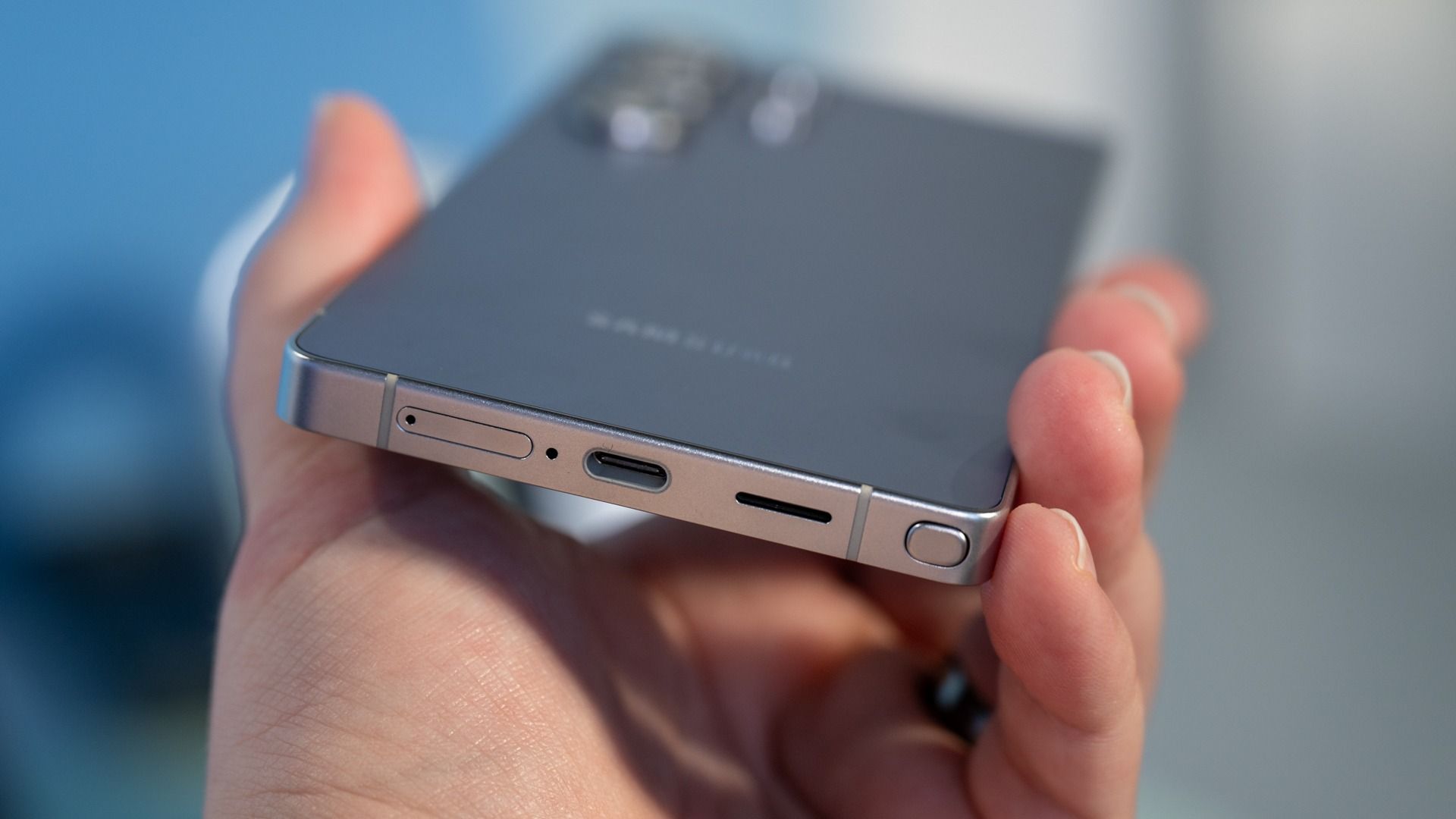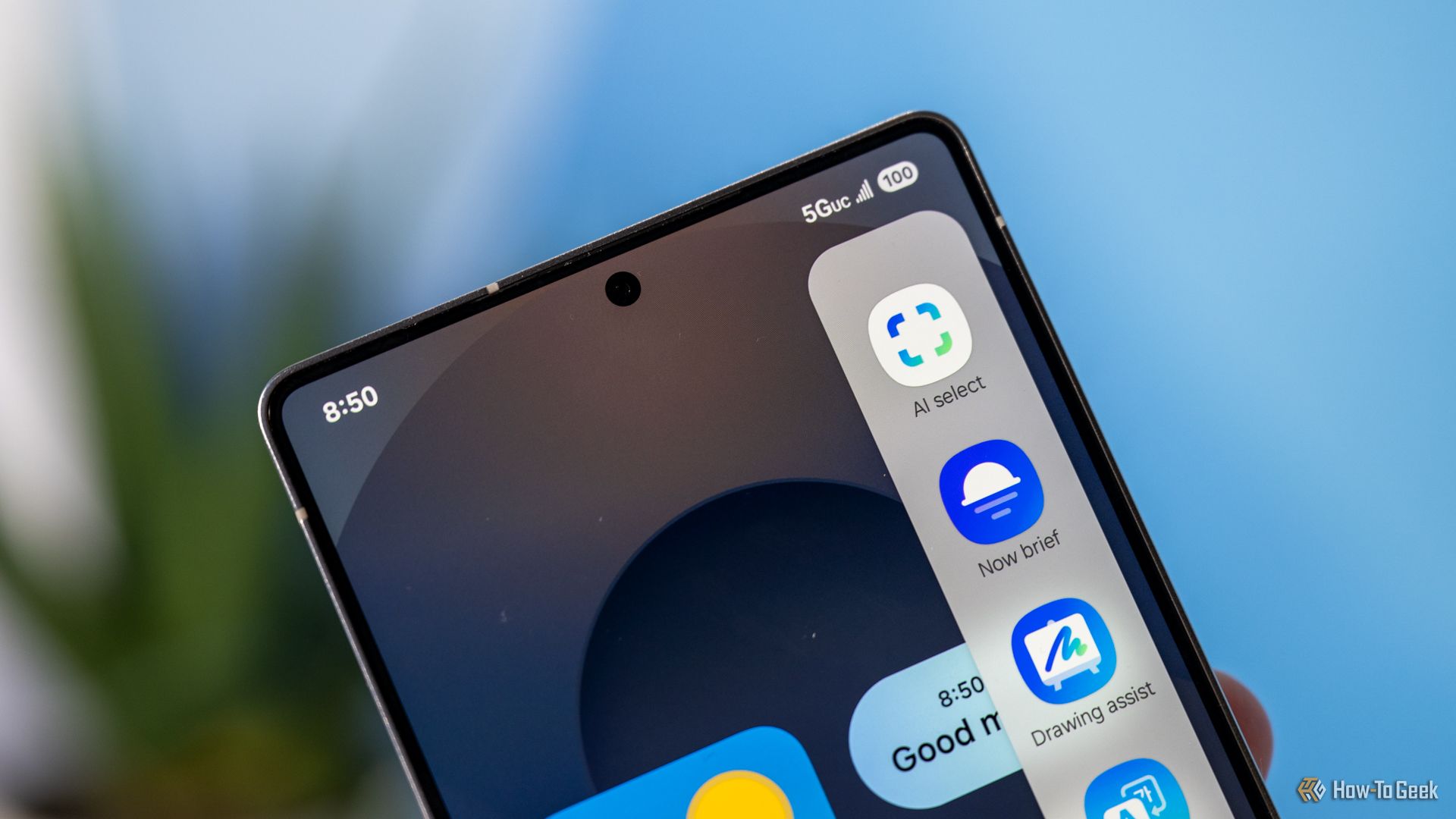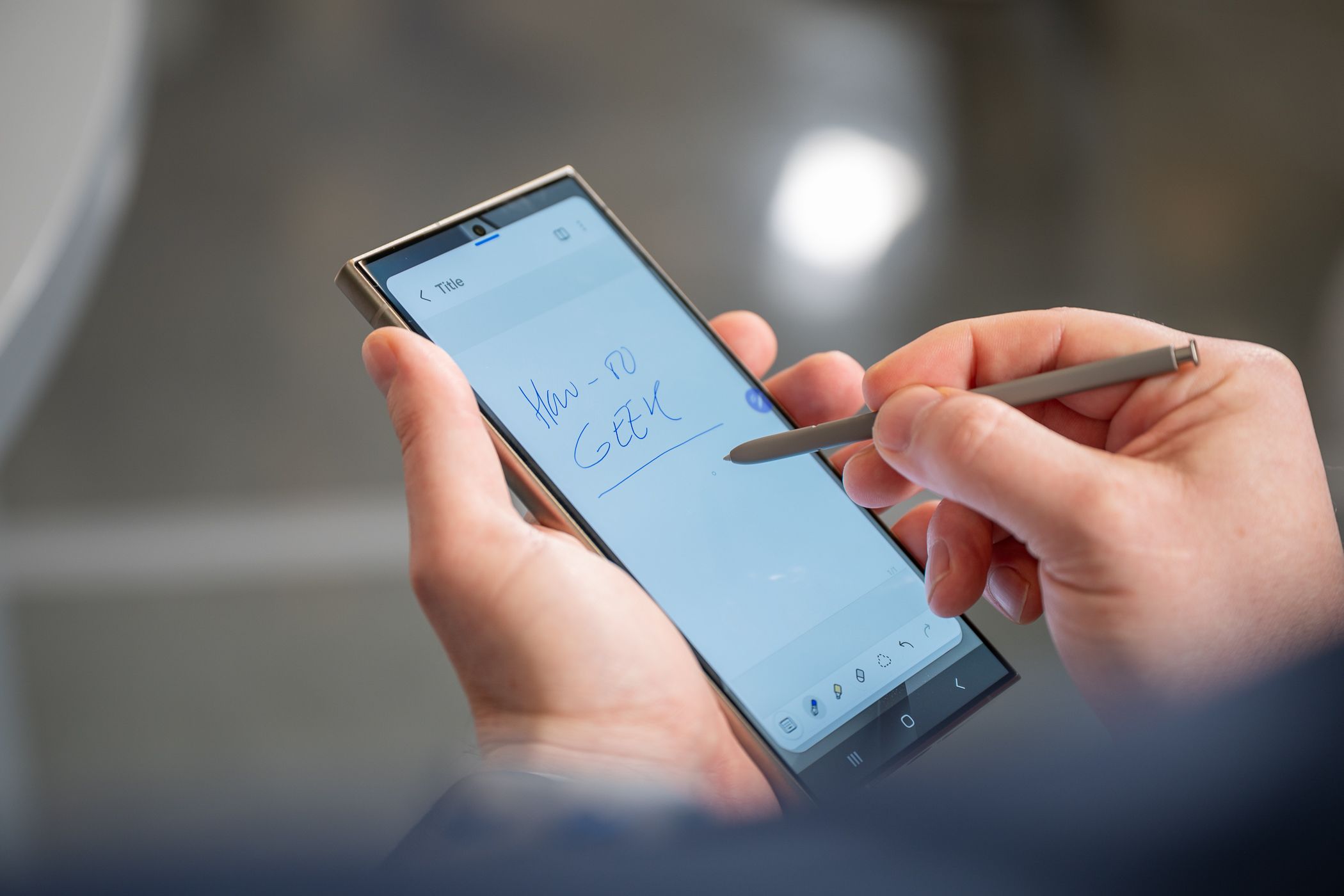With Samsung’s announcement of the Galaxy S25 Ultra, many people are wondering whether they should get the latest flagship or save some money and go with the S24 Ultra instead. If you’re one of them, here’s a detailed comparison to help you make an informed decision.
Price and Availability
The Galaxy S25 Ultra (256GB) costs $1,299.99. It is currently up for pre-orders and will hit stores starting February 7, 2025. Although the Galaxy S24 Ultra (256GB) launched at the same price, it is currently available at Best Buy for $899 (with immediate activation).
Galaxy S25 Ultra Is Slimmer and Lighter Than Its Predecessor
Galaxy S25 Ultra
It is easy to confuse between the Galaxy S25 Ultra and the Galaxy S24 Ultra, and that’s because the phones look very similar. However, the newer phone has rounder corners for a better in-hand feel, slightly flatter edges, textured camera rings (I’m referring to the periphery of the sensors), and new colors.
Regarding dimensions, the Galaxy S25 Ultra is 0.5mm taller, 1.4mm narrower, and 0.4mm slimmer than its predecessor. While the handset’s measurements aren’t all that different from the S24 Ultra, its weight sure is. At 218 grams, the phone is 14 grams lighter.
Galaxy S24 Ultra
Although Samsung hasn’t changed the design much, it has upgraded the materials. Instead of Corning Gorilla Armor glass on the S24 Ultra, the S25 Ultra uses Corning Gorilla Armor 2, which offers better scratch and drop protection. Further, the 2025 flagship uses the stronger grade 5 titanium for its frame (vs. grade 2 on the previous generation).
In terms of dust and water resistance, both phones have an official IP68 rating. Last but not least, the Galaxy S25 Ultra comes in seven colors, including the online exclusive Titanium Jadegreen, Titanium Jetblack, Titanium Pinkgold, and the regular Titanium Black, Titanium Gray, Titanium Silverblue, and Titanium Whitesilver shades.
Galaxy S25 Ultra’s Thinner Bezels Accommodate a Slightly Larger Screen
Galaxy S25 Ultra
The Galaxy S25 Ultra flaunts a gorgeous 6.9-inch Dynamic AMOLED 2X screen that can reach a peak brightness of 2,600 nits and supports a variable refresh rate (1-120Hz). Given that the phone is taller yet narrower than its predecessor, the reduction in the size of bezels accommodates the 0.1-inch bigger screen than the S24 Ultra.
While that number might sound negligible, it results in a four percent increase in the screen-to-body ratio of the S25 Ultra. The bigger screen takes a slight toll on the pixel density, though, as it goes down from 505 ppi on the S24 Ultra to 498 ppi on the S25 Ultra. Beyond that, there are no differences between the phones’ screens.
Thanks to the AMOLED screen, both phones get an ultrasonic under-display fingerprint scanner.
The S-Pen Isn’t as Good as It Used to Be
Galaxy S25 Ultra
For a very odd reason (discussed later), the Galaxy S25 Ultra’s S-Pen doesn’t feature Bluetooth connectivity. In other words, you can no longer use the stylus as a remote shutter to capture pictures. The Air actions are missing as well. Why, you ask?
While Samsung claims that most Ultra users don’t use the Bluetooth-based features of the S-Pen, I believe it’s an attempt to reduce manufacturing costs associated with a Bluetooth transmitter and a battery to power it. It could also be an attempt to reduce the smartphone’s weight (as the battery might have weighed a few grams).
Nonetheless, you can still use the S-Pen to take notes, draw on the Galaxy S25 Ultra’s screen, and use the Circle to Search feature. However, most features that set the S-Pen apart from a generic stylus aren’t there anymore.
Snapdragon 8 Elite vs. Snapdragon 8 Gen 3
Under the hood, the Galaxy S25 Ultra boasts an overclocked Snapdragon 8 Elite (3nm) SoC. While the regular version features two 4.32 GHz prime scores, the ‘for Galaxy’ variant takes it up to 4.47 GHz. This results in better CPU performance (a 37% improvement, as claimed by the company) than the Snapdragon 8 Gen 3.
Like the CPU, the chipset’s GPU is about 30% faster than its predecessor. Given that the S25 Ultra also includes support for Vulkan Engine API and improved ray tracing, video games should look more realistic on the S25 Ultra. Qualcomm has also upgraded the NPU on the processor; it can now handle features that previously required cloud processing, like Generative Edit.
Samsung Goes All-In On Agentic AI
Galaxy S25 Ultra
While One UI 7 comes with a few cosmetic changes, its main highlight remains to be the deeper integration of Gemini-based agentic AI, which is not just better at understanding the natural language but can also interpret multimodal inputs like text, speech, photos, and videos. The AI is better at understanding what you’re asking, why you’re asking it, and what could be the best possible solution.
For instance, you can ask Gemini on Galaxy S25 Ultra to find a picture in the Gallery and send it to someone on WhatsApp. You can also ask the AI assistant to adjust system settings, like the font on the screen, to change the brightness or perform other tasks without intervention.
The Circle to Search feature has also received a minor upgrade, wherein it can identify any details (like a phone number or email IDs on the screen) and suggest possible actions you might take. Last but not least, the Galaxy S25 Ultra, like other models in the lineup, will receive seven years of Android and security updates (which gives it one additional update over the Galaxy S24 Ultra).
New Ultra Gets a 50MP Ultrawide Camera Among Other Software Tweaks
Galaxy S25 Ultra
When it comes to optics, four out of five camera sensors on the S25 Ultra are the same as those on the S24 Ultra.
We have the 200MP (f/1.7) primary sensor, the 50MP (f/3.4, OIS) sensor with a 5x telephoto lens, the 10MP (f/2.4, OIS) sensor with a 3x telephoto lens, and the 12MP (f/2.2) selfie shooter common on both the smartphones. However, the S25 Ultra’s ultrawide camera has been upgraded from a 12MP (f/2.2) sensor to a 50MP (f/1.9) sensor.
This setup lets you capture photos (or videos) at virtually any zoom range, right from 0.5x to 100x (called Space Zoom). Further, the ultrawide sensor doubles as a macro shooter, allowing you to get closer to tiny subjects. While features like 8K video at 30 fps and 4K video at 120 fps remain common on both smartphones, the S25 Ultra has learned some new tricks.
For instance, the phone now shoots better-quality videos in low light. It also gets the Audio Eraser feature (similar to Audio Magic Eraser on the Pixel lineup) that helps remove background noises from a video. There’s a new virtual depth-of-field control button in the Expert RAW mode, along with the ability to shoot in Galaxy Log.
Similar Battery Capacity on Both Phones Is a Bit Disappointing
Galaxy S25 Ultra
At a time when new Android flagships are coming with 6,000 mAh or bigger batteries, the S25 Ultra still uses the good old 5,000 mAh cell. That’s not to say that something’s wrong with it. In fact, the device is rated to provide 31 hours of video playback (one more than the S24 Ultra).
The battery supports 45W wired charging, Fast Wireless Charging, and reverse wireless charging. Oddly enough, Samsung didn’t include the magnetic rings in the phone’s casing mandated by the Qi2 protocol.
How Could Samsung Not Announce This Key Feature?
Galaxy S25 Ultra
The Galaxy S25 Ultra supports 5G (sub-6 GHz and mmWave), Wi-Fi 7, Bluetooth v5.4 (vs. 5.3 on the S24 Ultra), and ultra-wideband for precise location tracking on Google’s Find My Device network. It also features the same USB-C 3.2 port as its predecessor. However, Samsung didn’t announce the inclusion of satellite connectivity on the S25 Ultra.
Shortly after the Galaxy Unpacked event, Qualcomm published a press release mentioning how the Snapdragon X80 5G modem on the S25 Ultra can send/receive messages to satellites via narrowband (NTN), a feature that could come in handy during emergencies. Although the feature isn’t active yet, Samsung should enable it via a future One UI upgrade in select regions.
Should You Upgrade to the Galaxy S25 Ultra?
Galaxy S24 Ultra
If you already own the S24 Ultra, there really isn’t a compelling reason to upgrade to the S25 Ultra. Your phone can do almost everything that is possible on the new iteration. Further, there’s a good chance that the features that are currently exclusive to the S25 Ultra will trickle down to older models, and when that happens, the S24 Ultra will be the first ones to receive them.
On the other hand, prospective buyers can make a decision based on their budget. Currently, the S24 Ultra (256GB) is available at Best Buy for $899.99 (with immediate activation), which is a steal of a deal. Even if you want the 512GB variant, Best Buy is selling it at $1,019.99 (with immediate activation), which is $280 less than Samsung’s introductory price.
The Galaxy S25 Ultra isn’t worthy of being called a generation leap, but it surely improves upon the standard set by the S24 Ultra. If you want the absolute best Android phone money can buy and are willing to shell out as much money as it will take, you can’t go wrong with the S25 Ultra. Pro tip: exchange your old Android phone for a cash discount.


